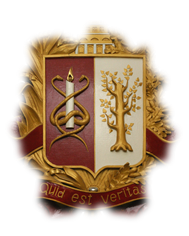Issue: 2020, Vol. 25, No. 3-4
CLINICAL MARKERS OF CEREBRAL VENOUS DYSCIRCULATION IN ISCHEMIC STROKE
- Keywords
- cerebral venous dyscirculation, ischemic stroke.
- Abstarct
- Actuality. Cerebral venous dyscirculation (CVD) in ischemic stroke (IS) is proved to be the serious problem. Evaluation system for clinical and functional manifestations for such state detection is absent. Objective – to determine CVD clinical markers in patients with IS. Material and methods. The survey was performed in Ivanovo municipal clinical hospital № 3 and Ivanovo municipal clinical hospital № 1. Clinical instrumental examination of 110 patients with IS in accordance with the standard of treatment in patients with acute disorders of cerebral circulation (ADCC) was performed. Cerebral hemodynamics was evaluated by duplex vessel scanning on ToshibaXarioA660-S apparatus (Japan). Prognostic coefficient (PC) and Kulbak information coefficient (Ik) were calculated in order to reveal the signs which might be significant for CVD clinical diagnosis. Results and discussion. CVD clinical markers in IS were as follows: localization of ischemic focus in vertebralbasilar system, cephalgy syndrome, headache appearance from night and in the morning, cephalgy manifestation amounting to 6-8 points by visual-analogous scale (VAS), face and lids edema in the morning, facial and neck veins dilatation. Level of venous-arterial balance (VAB) less than 49 % was proved to have the highest information significance for CVD diagnosis among the parameters of ultrasound duplex scanning (USDS). Conclusion. Practical application of CVD clinical markers promoted to reveal this pathology in patients with IS in order to determine further therapeutic tactics and treatment optimization.


 Vestnik_3-4_2020-67-70
Vestnik_3-4_2020-67-70